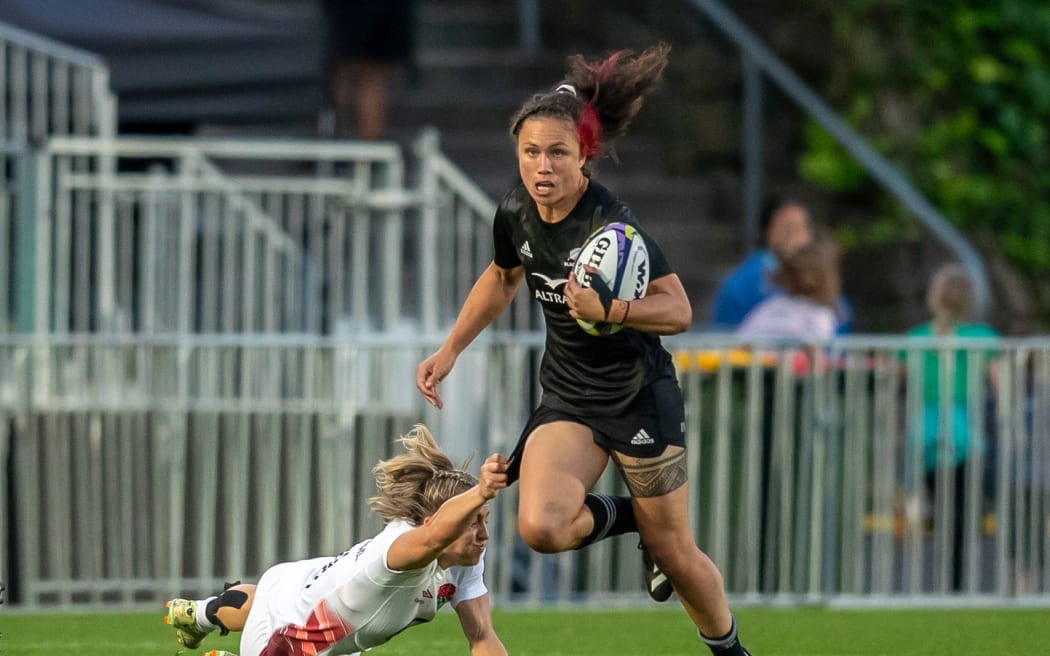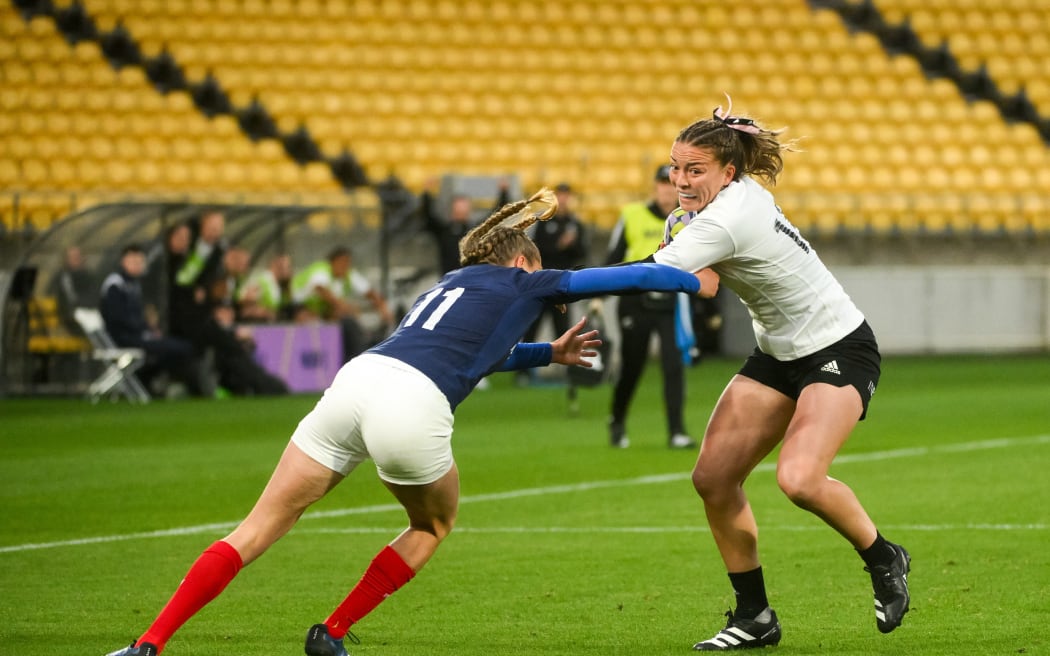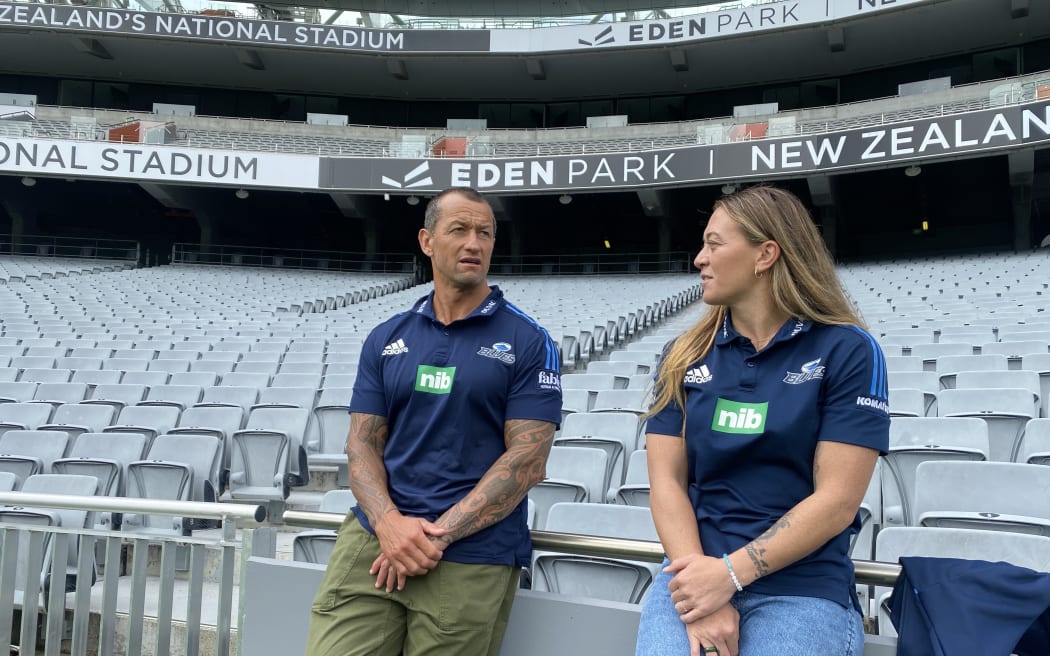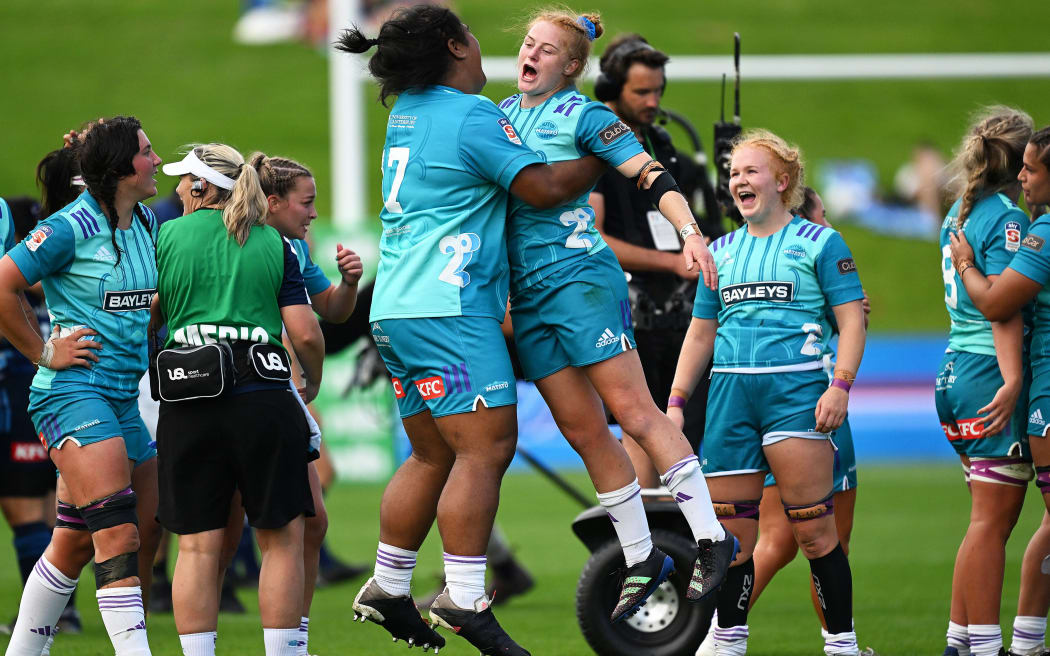Women’s rugby in Aotearoa: The challenges that lie ahead

Photo: Alex Leech / www.photosport.nz
We’ve just had our first uninterrupted season of professional women’s rugby in New Zealand. We’ve also had a relatively poor season from the Black Ferns, a situation where players can code hop seemingly at will, but also increases in participation that are clearly justifying NZ Rugby’s ambitious strategy launched earlier this year.
So where does this put the women’s game right now? A year on from the epic Rugby World Cup that was a massive win both on and off the field for NZ Rugby, head of women’s rugby Claire Beard admits that’s there’s “still a long way to go” in terms of keeping eyeballs on screens and turnstiles ticking.
“I think that you still have to be incredibly intentional about change,” Beard said at NZR’s Auckland office, sitting across from a TV playing a Black Ferns promo on an endless loop.
“People have choices around the consumption of anything, any leisure activity and any content activity is a choice. So, the opportunity to ensure that what we’re doing and how we’re doing it, we can’t just make it available and install it and think, yeah, the job’s done.”
Part of getting that job done is even knowing what success for the women’s game even looks like. As much as Beard tries to stress that they should be treated as a separate entity to their male equivalents, it is inescapable that it is challenged by a few of the same issues.
The most obvious was the poor crowd turnout for the recent WXV 1 tournament. That in itself was a complicated picture, while most of the blame has been laid on the fact that it was on at the same time as the men’s Rugby World Cup, the Black Ferns still pulled a very healthy 11,000-strong crowd in their Laurie O’Reilly Cup fixture against Australia at the end of September – also a weekend an All Black test was played.
Given the very one-sided nature of the Black Ferns v Wallaroos history and the fact that WXV 1 was offering a rematch of last year’s World Cup final, it shows that the market isn’t quite as straightforward to crack as first thought.
“I think the big thing is making sure we are learning,” Beard said.
“When stuff isn’t working, we stop it. And when we try things, we’re really intentional about trying things. We’ve been to a lot of venues over the last two years. We’ve introduced fans a lot of new formats and a lot of new brands…so I think simplifying the product offering for the fan is definitely a big learning.”

Renee Holmes of New Zealand makes a run. Black Ferns v France.
Photo: www.photosport.nz
That’s easier said than done. Super Rugby Aupiki will have to carry the brunt of exposure for women’s rugby next year, as it is unlikely the Black Ferns will be playing more than the usual home tests against the Wallaroos in 2024 before another WXV tournament offshore. The Farah Palmer Cup faces an uncertain future as NZR is faced with overhauling provincial rugby as a whole, its capacity now is barely a spectator-centric competition anyway.
“We do need a better feeder system,” Beard admitted, bringing up the most obvious issue hindering development at a high-performance level.
“We need more senior women’s rugby players, we need more female coaches and referees, we need more female volunteers, we need more diversity on our boards.”
NZR rightfully trumpeted the 20 per cent rise in females playing since last season, but that has been mainly in junior and secondary school grades. Right now, the professional game needs far more of a platform to work off than the 3,800 senior women players on NZR’s books.
Carlos Spencer certainly wasn’t mincing words in his first official media engagement as new Blues Women coach, bemoaning the fact that Aupiki is still only a Thursday-Sunday commitment for the players. The former All Black drew a line on the effect it had on the Black Ferns’ disappointing WXV 1 campaign in which they were thumped 35-12, a record loss at home, by an English Red Roses team that plays in a much longer domestic and test season.

Blues Women head coach Carlos Spencer and new signing Niall Williams-Guthrie at Eden Park.
Photo: supplied
“It shows what full-time [commitment] can provide for a team,” Spencer said.
“We don’t have the time and luxury those girls have in the Northern Hemisphere. Hopefully it’s a wake-up call to New Zealand Rugby that things have to change.”
Again, not that simple. It’s all well and good saying that Aupiki should be longer but it’s difficult to see how when there’s only four teams. However, there is one significant bright spot: as a TV product, women’s rugby is definitely trending up. A statement from Sky TV said that: “Overall, on linear channels engagement with Super Rugby Aupiki 2023 increased more than seven percent by the end of 2023 season and reach for women viewers has doubled compared to 2022.”
That certainly affirms that women’s rugby’s place on TV is something Sky is clearly committed to, something that Beard says has a lot to do with the perception of women’s sport overall.
“Cumulatively, the sports industry collectively have worked hard for it. To be honest, that people are kind of getting how awesome women’s sport is, what a contribution it can be to a happy, healthy and whole sport content offer in fan offering.”

Matatū players Ona Palu and Grace Brooker celebrate their win over the Blues.
Photo: Andrew Cornaga/www.photosport.nz
Beard is confident that the product of women’s rugby is appealing to both new fans to the game and the traditional audience of generational rugby fans.
“I think that the women’s rugby opportunities that we’re offering are good for those solid fans. I mean, I don’t know how many conversations I’ve had with those kind of avid male fans that are like, ‘I’m loving watching women’s rugby. It’s back to the good old classic rugby’.
“They (traditional rugby fans) are an incredibly valuable asset to our rugby family because they’re such massive advocates. Feeling better about being an advocate, a salesperson, a promoter of women’s rugby is absolutely integral to us and the game and listening to them is really important.”
One thing that is an ongoing development is the relationship it has with other sports that it shares talent pools with. In particular, the expanding NRLW, which NZR has no issue with non-Black Fern contracted players jumping in and out of.
“I mean we have nothing to be fear,” Beard said.
“We’re so proud that they are getting a Warriors women’s team underway, there is no competition if everyone’s successful.”
That’s an admirable sentiment, and Beard was keen to stress that women’s rugby is playing a part in the growth of women’s sport as a whole. As was seen with both the women’s rugby and football World Cups, it’s not only possible, but incredible when it’s done right. Just how getting that next stage right is the main challenge.
For all the latest Sports News Click Here
For the latest news and updates, follow us on Google News.
